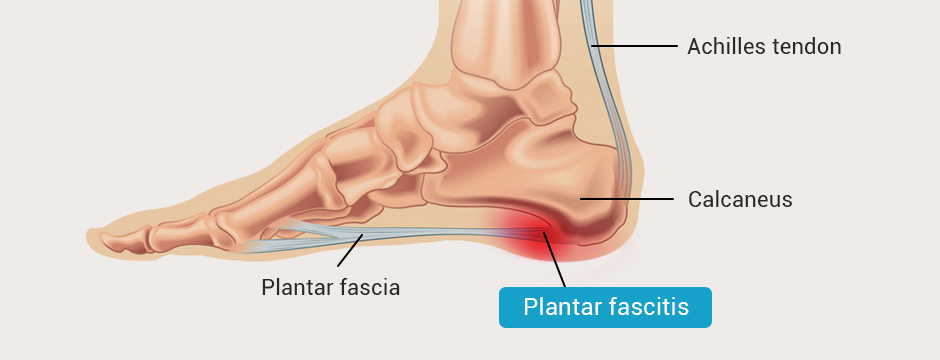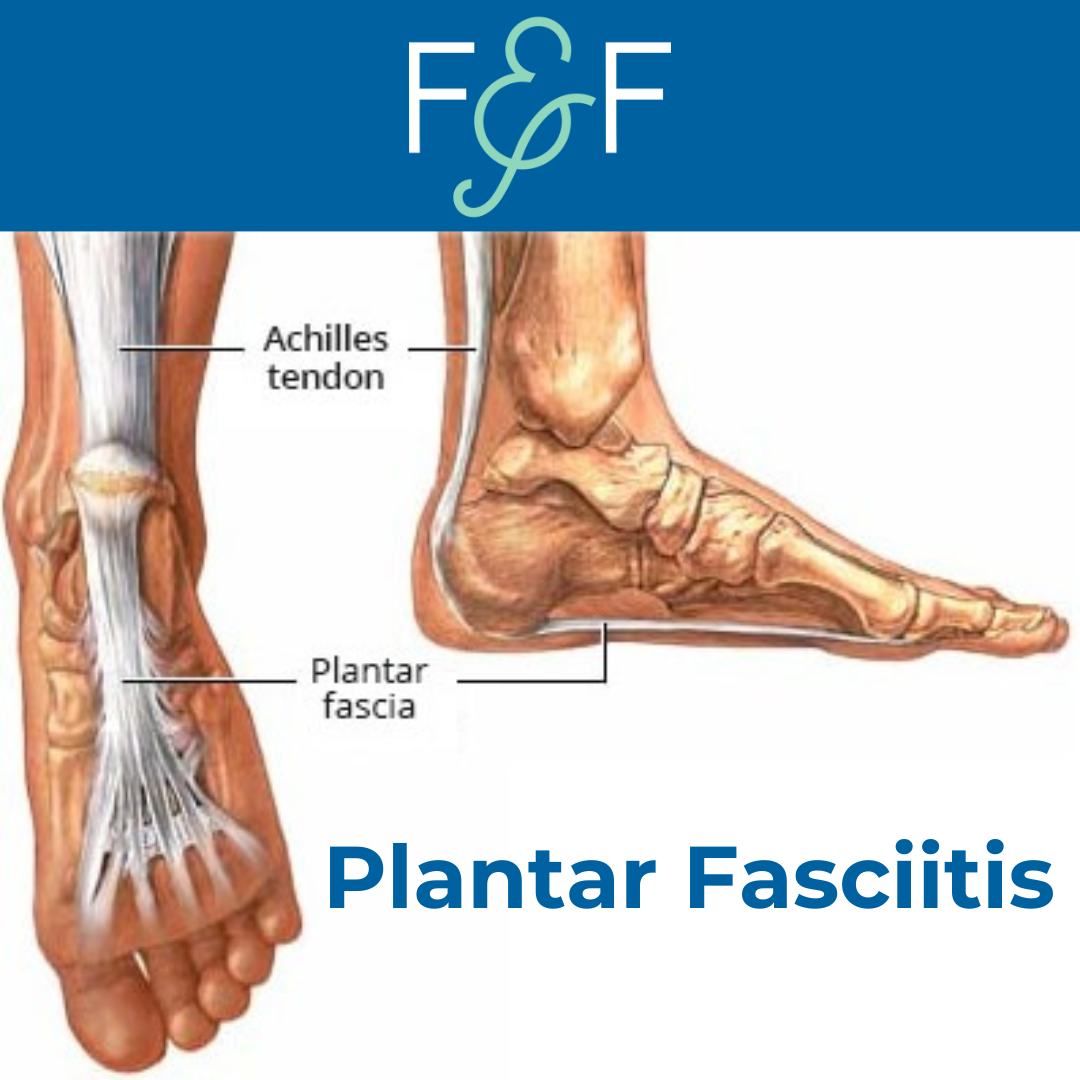The Runner’s Guide to Plantar Fasciitis
Plantar fasciitis—just hearing the term might make your heel throb if you’re one of the many runners battling this frustrating condition. Whether the pain started as a dull ache or hit you suddenly after an intense workout, the result is the same: walking, let alone running, feels like a struggle.
For runners, plantar fasciitis is a common yet misunderstood injury. It’s often caused by a mix of overuse, poor foot mechanics, and inadequate recovery. Without the right approach, it can sideline even the most dedicated athletes.
The good news? Plantar fasciitis is treatable. In this guide, we’ll break down what plantar fasciitis is, why it happens, and how you can recover without giving up your training entirely. Let’s tackle this together so you can get back to pain-free running.
A Quick Note on Terminology
As a physical therapist who works extensively with runners, I often get questions about plantar fasciitis. While we in the medical community might use the more technically accurate term “plantar fasciopathy” (which simply means a problem with the plantar fascia), the treatment approach remains largely the same.
The difference in terminology mainly reflects our understanding that:
- Plantar fasciitis suggests inflammation (“-itis”).
- Plantar fasciopathy describes a chronic overload issue (“-opathy”).
For this article, we’ll use both terms interchangeably, as most runners and healthcare providers commonly use “plantar fasciitis.”
Understanding Your Foot’s Support System
Let’s start with the basics: the plantar fascia is a remarkable structure in your foot. It’s not a muscle or a tendon, but rather a specialized tissue designed to provide stability. Think of it as a tough, dense band that runs along the bottom of your foot. Unlike what many believe, it’s not meant to stretch—it’s designed to be incredibly stable and sturdy, capable of handling significant forces.
The plantar fascia attaches to your heel bone (calcaneus) and extends toward your toes, playing a crucial role in maintaining your foot’s arch and providing essential stability during walking and running. Most people experience pain at this heel attachment point, which is why heel pain is often the first symptom they notice.

How Plantar Fasciopathy Develops
This condition typically develops in one of two ways:
- Sudden Onset: Picture sprinting across your yard to catch an escaping dog and suddenly feeling pain in your foot. This acute pain occurs when the fascia gets tugged on too quickly or forcefully. These cases often have a clear triggering incident that the runner can identify.
- Gradual Development: More commonly, the condition develops over months or years of gradual overload. This is particularly relevant for runners who incrementally increase their training load without adequate recovery periods. The insidious nature of this development often makes it harder to pinpoint exactly when or why the problem started.
Understanding Load Management
The key concept here is tissue loading. Whether sudden or gradual, plantar fasciopathy occurs when the load placed on the fascia exceeds its capacity to handle that load. This can happen through:
- Rapid increases in running volume.
- Sudden changes in running terrain or elevation.
- Significant increases in speed work.
- Changes in footwear or running technique.
- Inadequate recovery between training sessions.
The Classic Morning Pain
If you’ve experienced that characteristic sharp heel pain with your first steps in the morning, you’re not alone. This is one of the most common symptoms of plantar fasciopathy. The pain typically occurs after periods of inactivity—not just in the morning, but also after sitting at your desk or watching a movie.
Here’s why: contrary to what you might think, rest actually makes the tissue stiffer, not better. The plantar fascia, like many other tissues in our body, benefits from appropriate movement and loading. When we’re inactive, the tissue becomes less pliable and more sensitive to stress, leading to that characteristic pain with initial steps.
Myths About Plantar Fasciitis
When it comes to plantar fasciitis, there’s no shortage of misinformation. Let’s clear up some of the most common myths:
Myth 1: Rest is the Best Cure
While rest may temporarily reduce pain, it’s not a long-term solution for plantar fasciitis. Prolonged inactivity can actually worsen symptoms by causing stiffness in the fascia. Instead, recovery requires a combination of gradual loading exercises, mobility work, and activity modifications.
Myth 2: You Can Stretch the Plantar Fascia to Fix It
The plantar fascia isn’t like a muscle—it doesn’t stretch in the same way. In fact, trying to stretch it too aggressively can cause more irritation. Focus on improving mobility in the ankle and big toe instead, as this can reduce strain on the fascia.
Myth 3: It’s All About Your Shoes
While footwear plays a role, it’s rarely the sole cause of plantar fasciitis. Many cases stem from biomechanical issues, overtraining, or muscle imbalances. Supportive shoes can help, but they’re not a magic fix.
Myth 4: Rolling on a Tennis Ball or Frozen Water Bottle Cures It
Rolling can provide temporary relief by increasing blood flow and reducing stiffness, but it doesn’t address the root cause. Think of it as a helpful tool for managing pain, not a standalone treatment.
Myth 5: Surgery (or Cutting the Fascia) Is the Only Option for Chronic Cases
Some people believe that cutting the plantar fascia is the best way to solve persistent pain. While plantar fascia release surgery is a real procedure, it’s almost always a last-resort option. This surgery involves partially cutting the fascia to release tension, but it comes with risks, including instability in the arch.
For the vast majority of runners, conservative treatments like physical therapy, activity modifications, and strengthening exercises are highly effective. Surgery is rarely needed when the root causes are properly addressed.
Myth 6: Plantar Fasciitis Will Go Away on Its Own
Some cases do resolve over time, but persistent symptoms often need intervention. Ignoring plantar fasciitis can lead to chronic pain or compensatory injuries, so it’s best to address the problem early.
Myth 7: You Have to Stop Running Completely
For most runners, complete rest isn’t necessary. Modifying your training to reduce intensity, avoid high-impact activities, and manage symptoms can allow you to keep running safely during recovery.
When Should You Seek Help?
If you’ve been dealing with plantar fasciitis for more than a few weeks and self-care hasn’t provided relief, it’s time to seek professional help. While plantar fasciitis can sometimes resolve on its own, ongoing symptoms often indicate an underlying issue that needs to be addressed.
At Fit and Function Therapy Solutions, we specialize in helping runners recover from plantar fasciitis through a comprehensive, personalized approach. Here’s how we can help:
- Pinpointing the Root Cause
Not all heel pain is plantar fasciitis. Many runners experience similar symptoms caused by nerve or tendon-related issues in the same region. A thorough evaluation ensures you’re addressing the right problem from the start. - Gait Analysis and Biomechanical Assessment
We carefully evaluate your running and walking mechanics to identify factors contributing to your symptoms, such as overpronation, limited ankle mobility, or poor shock absorption. These insights help guide your individualized treatment plan. - Customized Strength and Mobility Exercises
Weak or tight muscles in the foot, ankle, and calf often place additional strain on the plantar fascia. Targeted exercises improve strength, flexibility, and stability, helping your body absorb impact more efficiently and distribute forces evenly. - Custom Orthotic Solutions
For runners with structural imbalances or foot mechanics that contribute to their pain, custom orthotics can be transformative. At Fit and Function, we offer a unique orthotics approach:
- We create temporary custom orthotics during your first session, allowing you to test them immediately.
- If they provide relief, we partner with Tony Bare at Bare Physical Therapy in Fort Collins, Colorado, to manufacture permanent custom orthotics tailored specifically to your needs.5. Tailored Training Modifications
We work with you to adjust your training plan so you can maintain fitness while reducing strain on the plantar fascia. This might include modifying mileage, switching to softer surfaces, or incorporating cross-training activities.
By addressing the underlying causes and creating a personalized recovery plan, we help runners not only heal but also return to running with improved strength and resilience.
Why Professional Help Matters
Plantar fasciitis can be a stubborn condition, especially for runners. Addressing it early with expert guidance can save you months of frustration, prevent compensatory injuries, and ensure a smoother recovery.
If you’re ready to tackle plantar fasciitis head-on, schedule a free discovery call with us today.
Running with Plantar Fasciopathy
Yes, you can often keep running with plantar fasciopathy if you make smart modifications:
- Reduce mileage and intensity.
- Switch to softer surfaces.
- Monitor symptoms carefully to avoid overloading the fascia.
Prevention Strategies
The best way to deal with plantar fasciitis is to prevent it. Here’s how:
- Smart Progression: Follow the 10% rule for increasing mileage.
- Deload Weeks: Plan lighter training weeks every three to four weeks.
- Strength and Mobility Work: Build strength and mobility in your calves, ankles, and feet to reduce the risk of overload.
Conclusion
If you’re currently dealing with foot pain, remember that while plantar fasciopathy can be frustrating, it’s typically manageable with the right approach. The key is getting an accurate diagnosis and understanding the specific factors contributing to your condition.
The complexity of foot and ankle biomechanics means that what works for one runner may not work for another. This is why it’s important to get a proper assessment rather than relying solely on generic advice or treatment approaches.
Remember, the goal isn’t just to get rid of pain – it’s to help you return to running confidently and prevent future issues from developing. With proper guidance and a systematic approach to treatment, most runners can overcome plantar fasciopathy and return to the activities they love.
For those dealing with persistent symptoms or uncertainty about their diagnosis, I encourage you to get it checked out. If you’re in the Boise area and would like help with your plantar fasciitis or other running-related issues, feel free to book a free discovery call with us to get started. If you just have questions, you can email me or send me a DM on Instagram.

